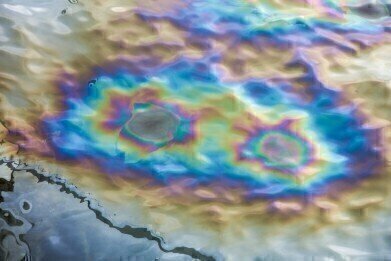Fuel for Thought
Four Ways to Clean Up an Oil Spill
Mar 04 2015
As the types of oil spills differ, so do the methods of cleaning them. Cleaning methods depend on factors such as the time of the spill, type of oil, weather conditions and location.
In general, there are four methods of cleaning up an oil spill.
1. Natural Dispersal
Oil will eventually break down naturally if left alone. This is due to the actions of the sun, weather and wave action. Therefore, if the oil spill is not close to coastal regions and does not threaten wildlife, the best course of action is to leave it. Oil always floats in salt water and usually in fresh too. Lighter oils will disperse faster than heavier ones, however, the heaviest crude oil can sometimes sink in fresh water. When oil does break down it mixes with water, along with other particles such as sand, to form tar balls. These tend to scatter across a wide area and are not seen as a threat to the environment.
2. Dispersants
If the spill is in a tropical region, chemical dispersants are usually employed. These work by breaking the oil apart and allowing it to mix with water. They are most effective if used within a couple of hours of the initial spill. When the oil breaks apart, it forms droplets of oil and water. This increases the surface area of the oil, allowing more exposure to the elements and increases the speed of evaporation. Dispersants are not used for all oil spills, as the actual chemicals used can pose a problem to some marine life and coral reefs.
3. Biological Agents
If the spill has reached a coastline and is a threat to wildlife, it is considered best practice to use biological agents to clean it up. This is a relatively natural method and introduces bacteria to the spill in order to start the process of biodegradation. Fertilising agents such as phosphorus and nitrogen are added to the coastline to encourage bacteria to grow. The bacteria then break down the oil into natural compounds which can be absorbed into the ground. The success of this method is dependent on several factors, such as the type of coastline treated and the kind of fertilizer used.
4. Floating Devices
As oil floats on water it can, in theory, be contained using floating devices. There are several types of device that can be used and in different ways. Floating booms range from inflated tubes to more solid structures. These are used to surround and isolate oil spills, or to direct them away from vulnerable wildlife. Skimmers are designed to float across the spill and sweep or scoop the oil into tanks situated either on the coastline or at sea. These floating devices are best used on calm waters, and not when there are high winds or stormy seas.
Oil Spill Analysis
In the aftermath of the Deepwater Horizon oil spill that discharged millions of gallons of oil into the Gulf of Mexico in April 2010, researchers have poured over reams of data to monitor its effects on the environment. While most of the attention has focused on the Gulf waters, spectroscopic instrumentation has also been deployed to monitor the air quality in the affected areas. For more information on this research, read: Environmental Spectroscopy Brings the Measurement to the Sample.
Digital Edition
PIN 25.1 Feb/March
March 2024
In This Edition Safety - The technology behind the ION Science Tiger XT - Safety with ammonia and LOHCs as hydrogen carriers Analytical Instrumentation - Discussion on new tribology te...
View all digital editions
Events
Apr 28 2024 Montreal, Quebec, Canada
Apr 30 2024 Birmingham, UK
May 03 2024 Seoul, South Korea
May 05 2024 Seville, Spain
May 06 2024 Riyadh, Saudi Arabia


















